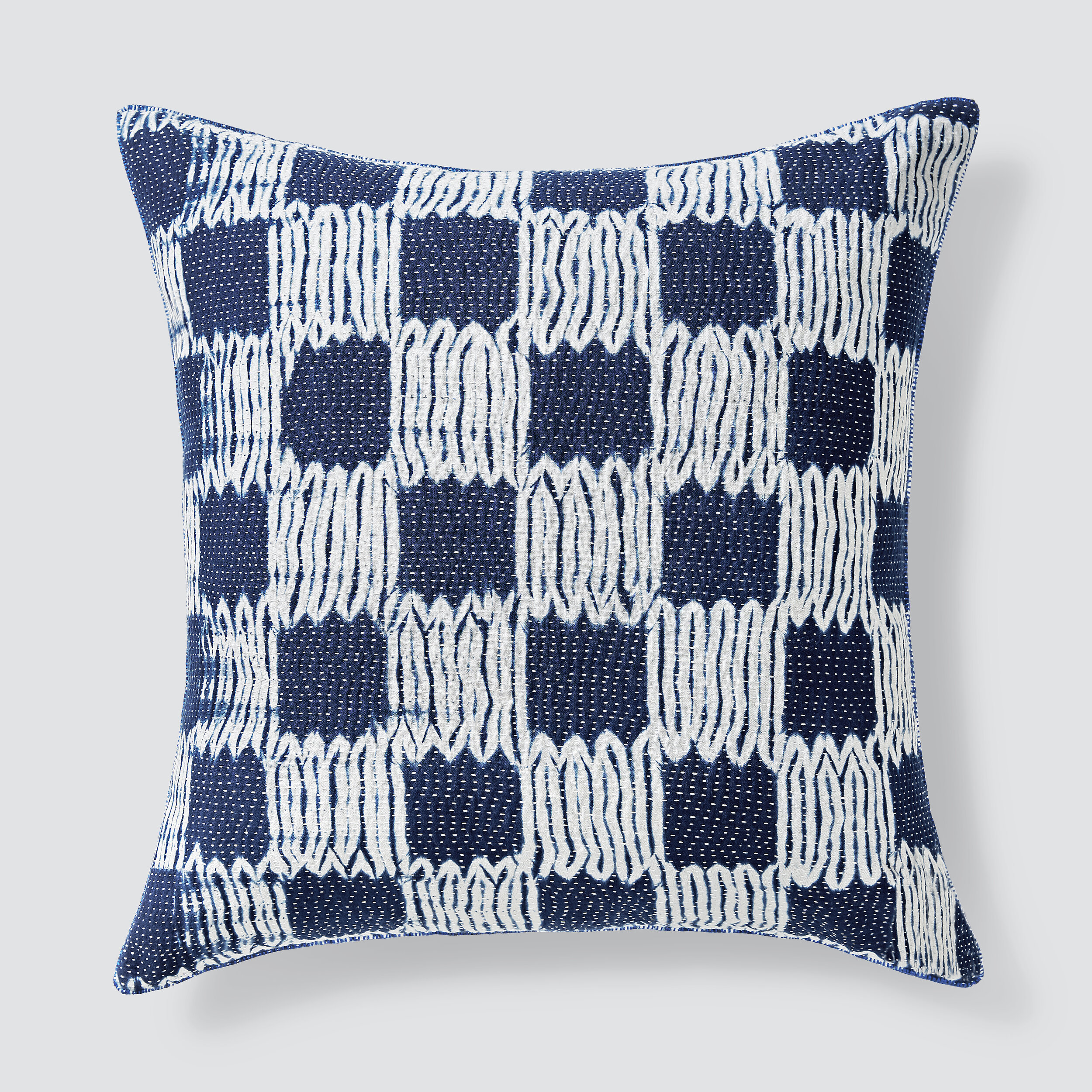SHIBORI
Shibori is a resist dyeing technique that involves folding and binding fabric, then dipping it in a dye bath. The uncovered areas come into contact with the dye and take on its colour, but the covered areas remain the original colour of the fabric. This combination of dyed and undyed parts creates the fabric’s pattern. Much skill is required to fold the fabric in such a way that the correct pattern appears. When done by hand, the coloured parts tend to bleed slightly into the undyed parts, creating a slightly hazy effect. The irregularity of this ‘haze’ is what distinguishes hand-dyed from machine-dyed shibori. Skilled shibori artisans are able to manage this bleeding so that it adds a subtle character to the fabric without overwhelming the pattern.
The term shibori comes from the Japanese ‘shiboru’, which means “to wring, squeeze or press”. Although shibori has been practised throughout the world, it is most commonly associated with Japan as the country has a long history of celebrating shibori and treating it as a high art form. In the West, resist dyeing techniques have developed an image of cheapness over the past few decades due to the ‘tie-dye’ patterns of the 1970s, most of which were machine made and unsophisticated. However, the recent resurgence of interest in craftsmanship has restored shibori’s reputation as a sophisticated art form that reveals the beauty that can be achieved when artisanal skill is combined with the ‘resistence’ of cloth.
Our shibori collection comprises cushion covers and blankets made by a group of highly skilled artisans in Bangladesh. The artisans were trained by a shibori expert from Japan and they combine this technique with the use of natural dyes and a traditional Bengali stitching technique called kantha. Our collection focuses on a shibori technique called ‘mokume’, which is inspired by the pattern of tree bark. You can read about our visit to the producer group here.
To shop the shibori collection, click here.





